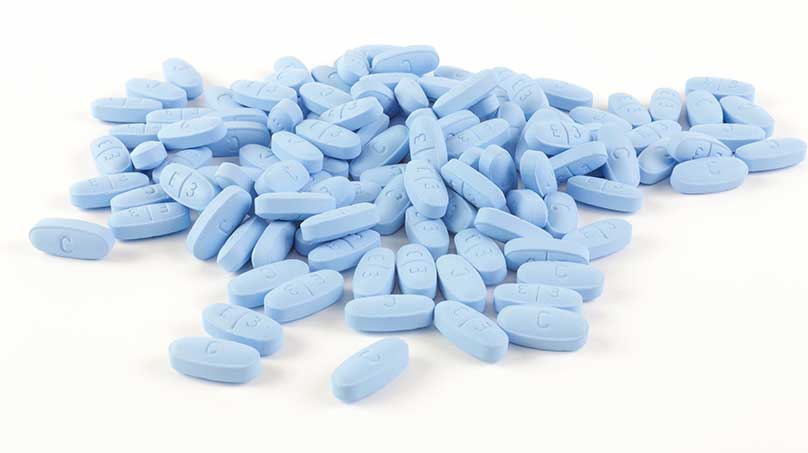Plugging Halcion | Effects & Dangers Of Rectal Triazolam Use
“Plugging” refers to the insertion of drugs into the rectal cavity using a needleless syringe. People who plug Halcion most often do so to increase the drug’s effects by bypassing the digestive system.

Halcion (the brand name for triazolam) is a benzodiazepine prescription drug and central nervous system (CNS) depressant. This medication is prescribed short-term for those suffering from insomnia or other sleeping disorders.
According to the United States Drug Enforcement Administration (DEA), Halcion is a Schedule IV controlled substance, meaning it has abuse potential and may lead to psychological or physical dependence.
When abused, Halcion can produce sedative effects and feelings of euphoria, which is why some participate in plugging Halcion, or the act of inserting the drug into the rectum.
Effects Of Plugging Halcion
When a person plugs Halcion, the drug enters the body’s system more quickly than when taken orally, as typically informed by your prescribing doctor.
To plug Halcion, a person must crush the pill into a fine powder. Once this takes place, the powder is combined with a liquid and inserted into the rectum.
The general, common side effects of taking Halcion orally consist of:
- sleepiness
- memory impairment
- slowed reaction time
- drowsiness
- lightheadedness
- sedation
- headache
When a person participates in plugging Halcion, they may also experience:
- worsened common side effects
- damage to the anal walls
- an increased risk of disease
- an increased risk of overdose
- severe Halcion withdrawal
Dangers Of Plugging Halcion
There are several dangers associated with plugging or “booty bumping” Halcion.
Since the process involves administering the drug into the rectum through the anus, those with medical conditions or older adults may immediately experience adverse effects due to the short amount of time it takes for the drug to enter the bloodstream and provide profound sedation.
Damage To Anal Tissue
Damage to the mucous membranes and anal tissue can take place due to the irritation caused by plugging the benzodiazepine. This can lead to frequent bleeding, tears in the anal walls, or damaged blood vessels within the rectum.
Those who share syringes and accidentally combine bodily fluids can develop bacterial infections such as HIV or hepatitis C.
Withdrawal Symptoms
Those who abruptly stop taking Halcion without receiving treatment may suffer from Halcion withdrawal symptoms which may include, according to the United States Food and Drug Administration (FDA):
- sleep problems such as rebound insomnia
- severe cravings for the drug
- suicidal thoughts or other mental health problems
- hallucinations
- tremors or muscle twitching
Those who plug Halcion may experience severe withdrawal due to this route of administration. Despite entering the bloodstream fast, the euphoric feelings can fade quickly.
Halcion Overdose
A Halcion overdose will more likely occur if the drug is taken in high doses. When a person plugs Halcion, they may not be aware of the amount of the drug entering the body.
If a large amount of the drug is taken or if Halcion is combined with CNS depressants such as opioids or other benzodiazepines, including lorazepam (Ativan) and diazepam (Valium), the threat of a life-threatening drug overdose greatly increases due to drug interactions.
Some of the signs of a Halcion overdose consist of:
- seizures
- blood pressure fluctuations
- impaired coordination
- respiratory depression
- confusion
- heart rate fluctuations
- coma
Substance Abuse Treatment
If you or a loved one are suffering from a substance use disorder or battling Halcion addiction, contact Ohio Recovery Center. At our treatment center, our healthcare professionals offer numerous treatment options for you to consider.
In fact, we provide inpatient care, medical detox, and various evidence-based practices. Speak with one of our team members today to learn more about our treatment plans.
- Drug Enforcement Administration (DEA) https://www.dea.gov/sites/default/files/2020-06/Benzodiazepenes-2020_1.pdf
- Food and Drug Administration (FDA) https://www.accessdata.fda.gov/drugsatfda_docs/label/2016/017892s049lbl.pdf
- National Institute on Drug Abuse (NIDA) https://nida.nih.gov/publications/drugfacts/prescription-cns-depressants
- National Library of Medicine: DailyMed https://dailymed.nlm.nih.gov/dailymed/drugInfo.cfm?setid=a0da0dba-a56d-486b-a45b-e8a7cdfbeac6
- National Library of Medicine: MedlinePlus https://medlineplus.gov/druginfo/meds/a684004.html

